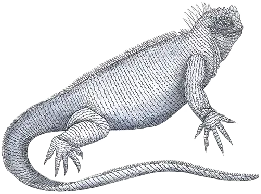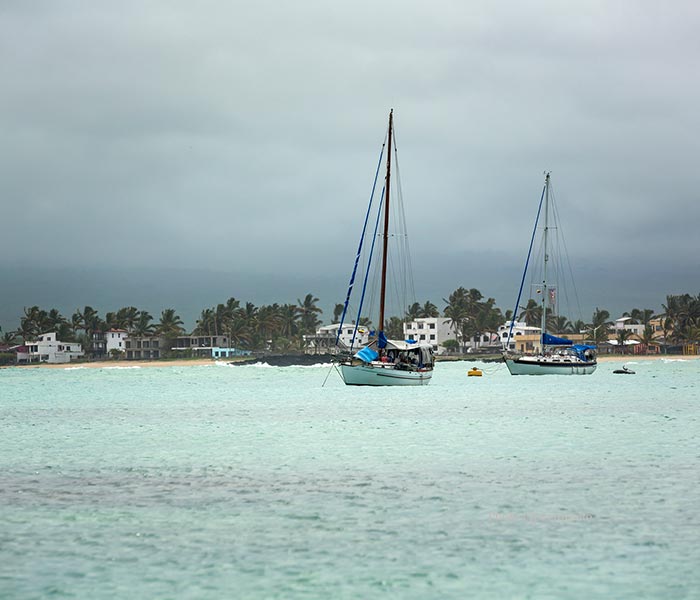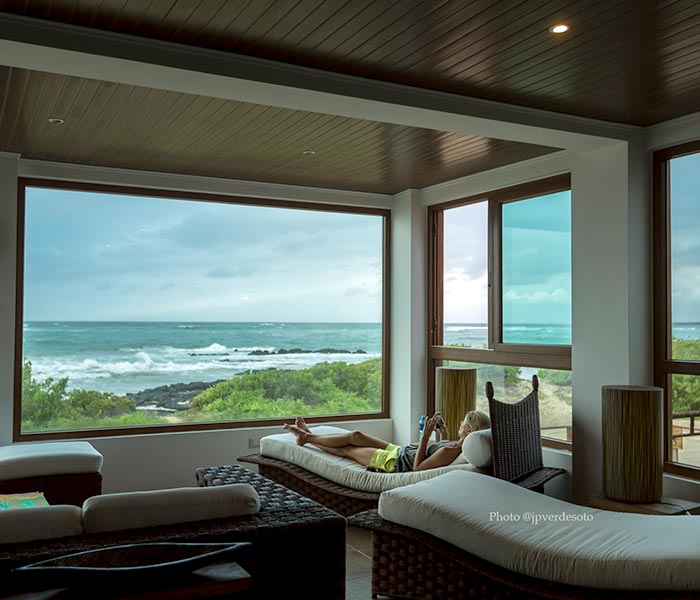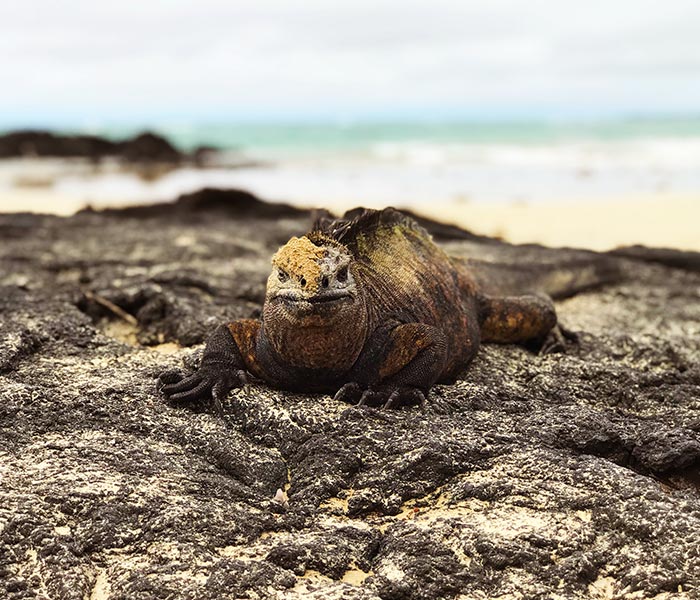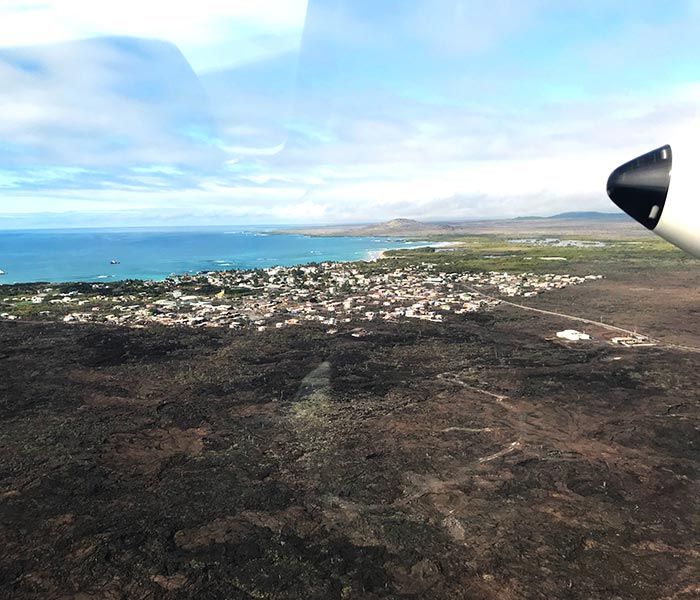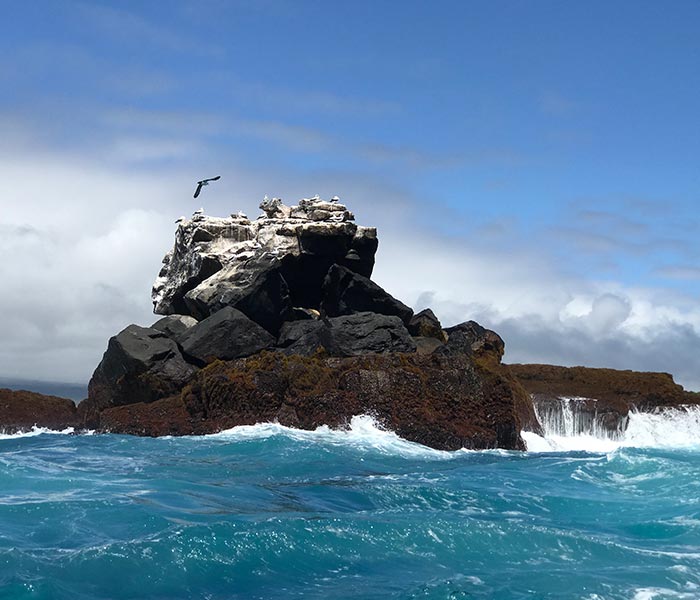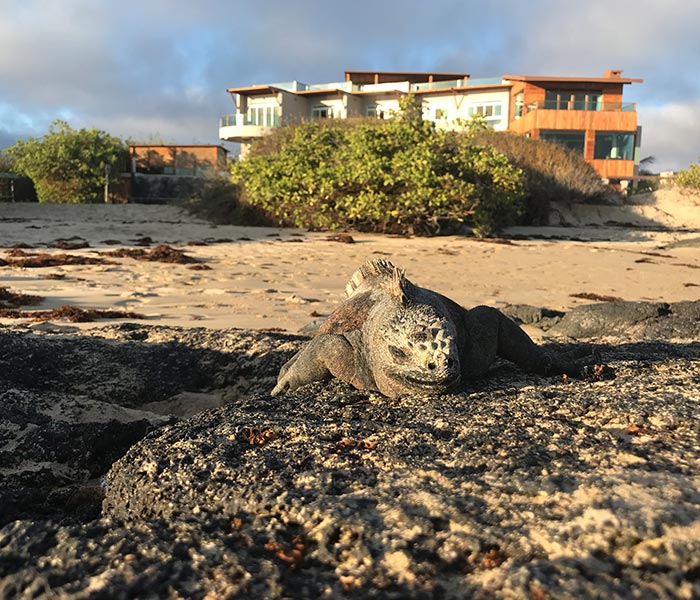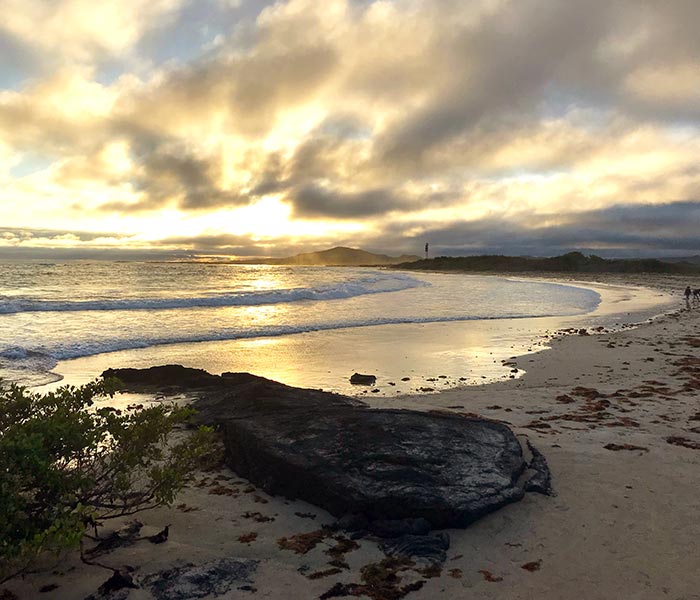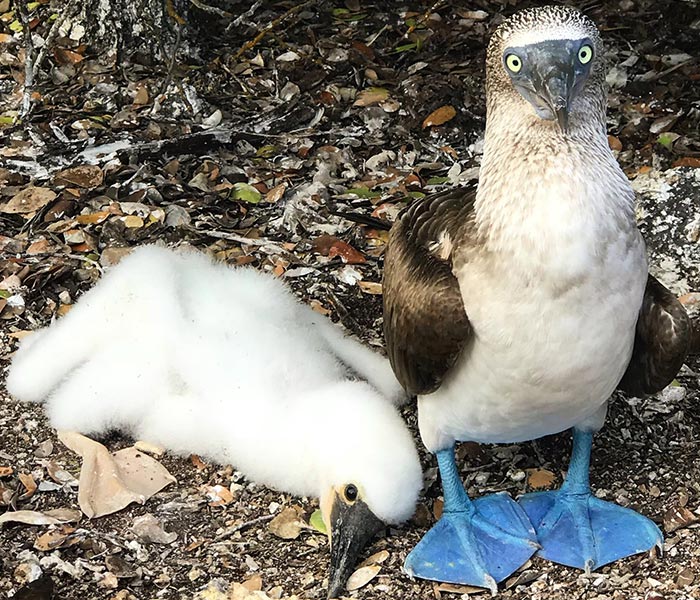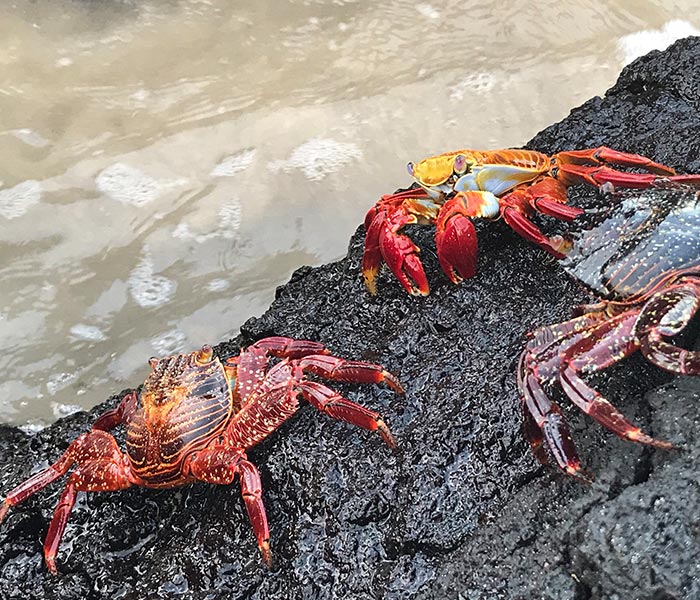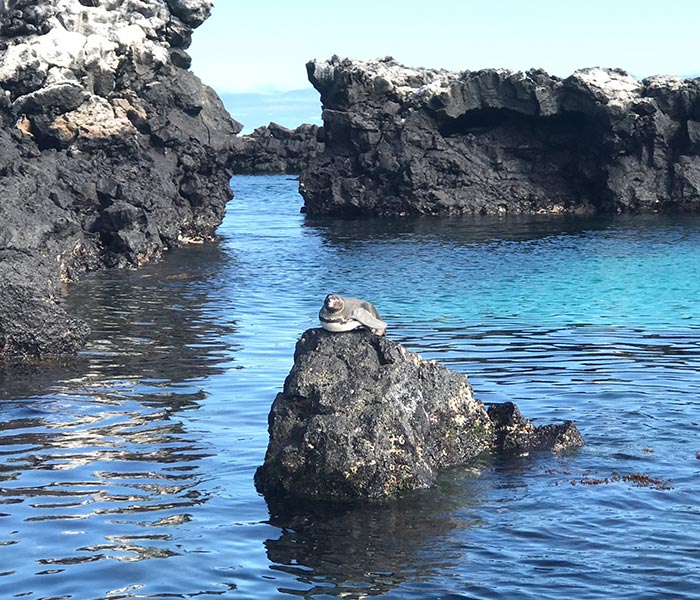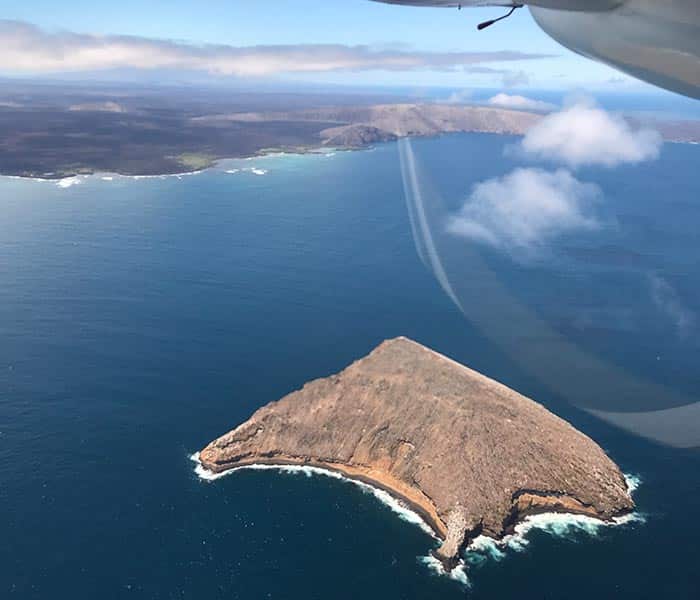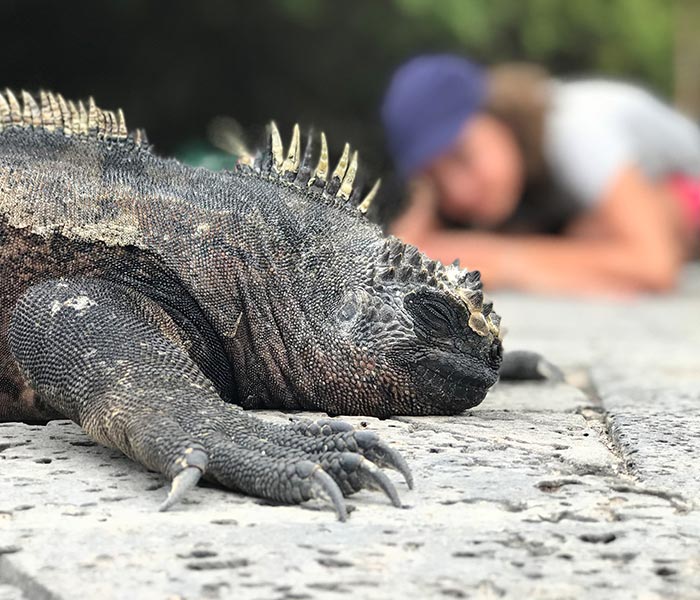Northwest of the main town of Puerto Villamil, Volcan Sierra Negra (1490m), home to the second largest active volcanic crater in the world, towers over the island. The shield volcano last erupted in 2005, sending 300m fountains of lava into the night sky. During an active day immersed in the lavish landscape of the island, our trip traverses an 8km trail around the eastern side of the volcano that culminates in breathtaking views of Isabela and the nearby islands.
In the course of the accent, the journey takes you through several microclimates. The trail starts in the cloud forest, where delicious guava fruit and a variety of birdlife await. Along the way, your guide will point out Galapagos hawks, short-eared owls, flycatchers, and finches that often frequent this route.
The hike continues through petrified, out-of-this-world lava fields, which can be challenging at points. Once at the 6-mile diameter crater, the temperature of the air rises slightly due to the lava flowing underneath the crust. Hiking around the rim gives way to panoramic views of the surrounding cloud forest, the highlands of Isabela, and the most recent lava formations of the expansive crater itself.
Depending on the weather conditions, the trail may be muddy and hard to navigate, and the view might cloud over. Due to the crater’s altitude, the view from the top is often clear when the conditions below are overcast. As our tours are private, you do not have to complete the full trail and you can shorten the visit if needed.
After the visit to Sierra Negra, we will take you to a short boat ride from the main town of Puerto Villamil to Las Tintoreras Islet. The first stop is offshore, near a colony of penguins.
The Galapagos penguin is one-of-a-kind; the only member of its species to live north of the equator. The endemic penguins are on the endangered species list, and the work of the Galapagos Conservancy has helped to increase their numbers over the recent years with the construction of artificial nests that are the sight of 43 percent of the penguin breeding activity in the area.
After arriving on land, explore the nooks and crannies of the islet’s lava formations, including submerged tunnels carved into the rock where white-tipped reef sharks rest. The waters of Isabela are an important feeding area for Galapagos wildlife, drawing a variety of species to the cool seas.
On the shore and along the trail, blue-footed boobies, great blue herons and a large population of marine iguanas make the short hike an adventure. There is a marine iguana breeding colony here, and during its peak it is hard to navigate the trail without watching where you step every few paces!
While the creatures above the water are fascinating; the rich, underwater life is also worth discovering during a snorkeling session in the open waters. Sea lions and turtles, marine iguanas, and rays are some of the creatures sighted amidst vibrant schools of fish when the conditions are right.
